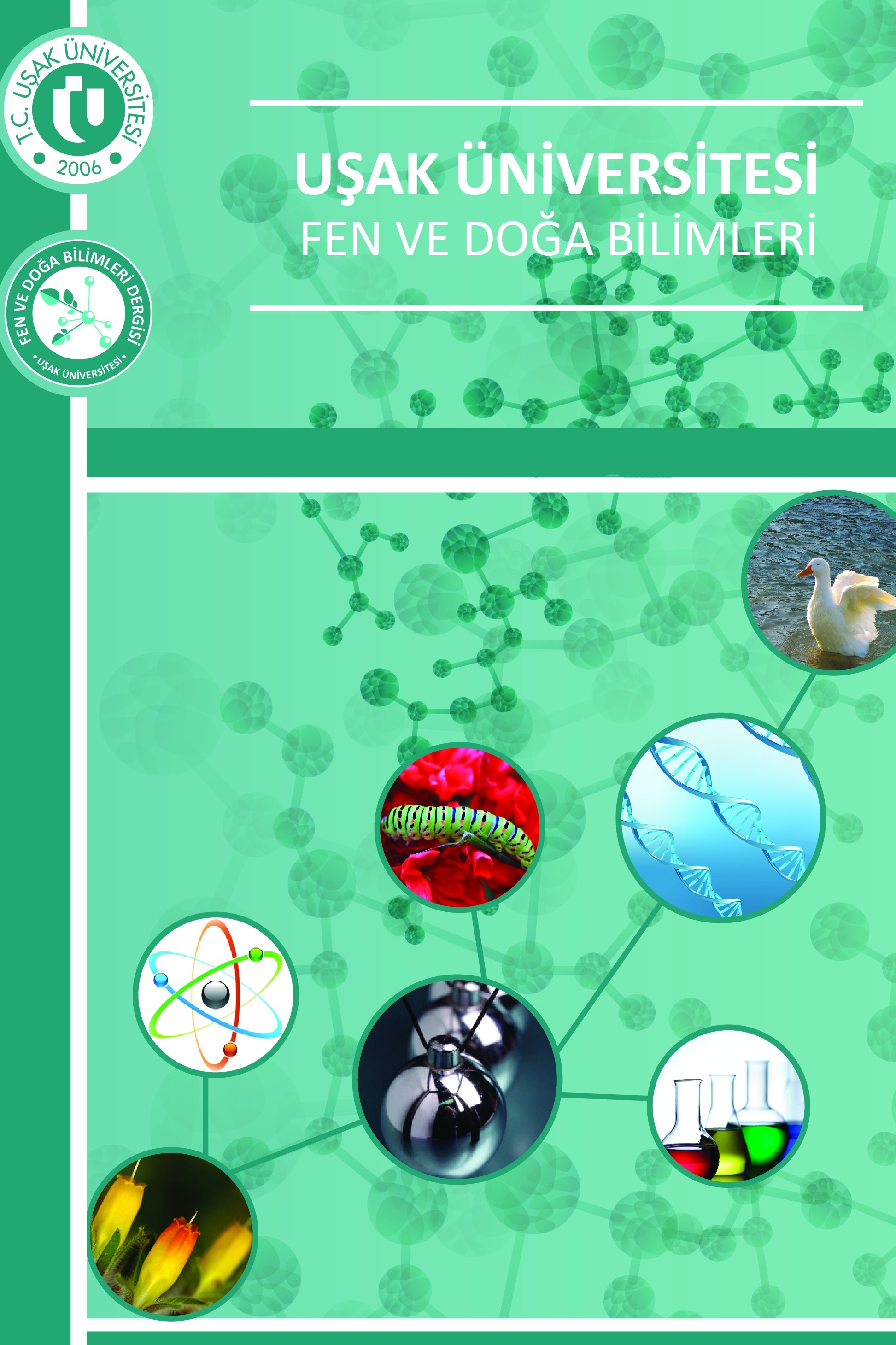Demir Sülfat Formundaki Demirden Yararlanabilme Kabiliyetleri Yönünden Bazı Çeltik Çeşitlerinin Karşılaştırılmaları Üzerine Bir Araştırma
Bu çalışmanın amacı, demir sülfat formundaki demirden yararlanabilme kabiliyetleri yönünden bazı çeltik çeşitlerini karşılaştırmaktır. Bu amaçla, 1) Biga İncisi, 2) Osmancık-97, 3) Hamzadere, 4) Ronaldo, 5) Edirne çeltik çeşitleri yetiştirilmiştir. Kum kültüründe yetiştirilen çeltik çeşitlerine 0 ve 45 µM Fe (FeSO4.7H2O formunda) içeren tam besin çözeltisi uygulanmıştır. Deneme 5×2 faktöriyel deneme desenine göre 3 tekerrürlü yürütülmüştür. Deneme süresi 50 gündür. Bazı çeltik çeşitleri, demir sülfat ile beslenebilme durumunu gösteren 9 özellik bakımından, 2 ana grup oluşturmuştur. 1. Ana grupta Osmancık-97 ve Hamzadere çeltik çeşitleri bulunmakta olup, bu çeşitlere Biga incisi çeltik çeşidi yakınlık göstermiştir. 2. Ana grup Ronaldo ve Edirne çeltik çeşitlerinden oluşmuştur. Bazı çeltik çeşitleri, demir sülfat ile beslenebilme kabiliyetleri bakımından birbirine en yakın iki çeltik çeşidinin Ronaldo ve Edirne çeşitleri olduğu; buna karşın, birbirine en uzak çeltik çeşitleri ise Biga incisi ve Ronaldo çeşitleridir. Demir sülfat ile beslenme kabiliyetleri bakımından çeşitlerin en iyi özellikleri çeşitlere göre değişiklik göstermiştir.
Anahtar Kelimeler:
Çeltik çeşidi, Demir sülfatla beslenme kabiliyeti, Demir beslenme özellikleri, Biplot analiz yöntemi
A Study on the Comparison of Some Rice Varieties in Terms of Their Utilization Capabilities from Iron in Iron Sulphate Form
The aim of this study is to compare some rice varieties in terms of their ability to utilize iron in the form of iron sulphate. For this purpose, 1) Biga incisi, 2) Osmancık-97, 3) Hamzadere, 4) Ronaldo, 5) Edirne rice varieties were grown. A complete nutrient solution containing 0 and 45 µM Fe (in the form of FeSO4.7H2O) was applied to the rice varieties grown in sand culture. The experiment was conducted in 3 replications according to a 5 × 2 factorial trial design. The trial lasted 50 days. Some rice varieties have formed 2 main groups in terms of 9 traits showing the ability to be fed with iron sulphate. Osmancık-97 and Hamzadere rice varieties are listed in the first main group, and Biga incisi variety is found to be close to these varieties. The second main group consists of Ronaldo and Edirne rice varieties. It has been determined that the two closest rice varieties to each other in terms of their ability to feed on ferrous sulfate are Ronaldo and Edirne varieties, while the most distant varieties are Biga Pearl and Ronaldo rice varieties. The best characteristics of the varieties in terms of their ability to feed with ferrous sulfate varied according to the varieties.
Keywords:
Rice variety, Ability to feed with iron sulfate, Properties of iron nutrition, Biplot analysis method,
___
- Ishimaru Y, Suzuki M, Tsukamoto T, Suzuki K, Nakazono M, Kobayashi T, Wada Y, Watanabe S, Matsuhashi S, Takahashi M, Nakanishi H, Mori S, Nishizawa NK. Rice plants take up iron as an Fe3+-phytosiderophore and as Fe2+. Plant Journal, 2006;45:335-346.
- Kumar R, Sahi GK, Kaur R, Khanna R, Choudhary OP, Mangat GS, Singh K. Tolerance response of wild and cultivated Oryza species under iron deficiency condition. Journal of Crop Improvement, 2013;40(2):168-172.
- Marschner H. Function of mineral nutrients: Micronutrients, Mineral Nutrition of Higher Plants, London: Academic Press, 1995. p. 313-324.
- Gill SS, Tuteja N. Reactive oxygen species and antioxidant machinery in abiotic stress tolerance in crop plants. Plant Physiology and Biochemistry, 2010;48:909-930.
- Lindsay WL, Schwab AP. The Chemistry of iron in soils and its availability to plants. Journal of Plant Nutrition, 1982;5:821-840.
- Romheld V, Marschner H. Evidence for a specific uptake system for iron phytosiderophores in roots of grasses. Plant Physiology, 1986;80:175-180.
- Rogers EE, Guerinot ML. FRD3, a member of the multidrug and toxin efflux family, controls iron deficiency responses in Arabidopsis, Plant Cell, 2002;14:1787-1799.
- Epstein E, Bloom AJ. Mineral Nutrition of Plants: Principles and Perspectives, 2nd Edn. Sunderland, MA: Sinauer.
- Takagi S, Kamei S, Takemoto T. Physiological aspect of mugineic acid, a possible phytosiderophore of graminaceous plants. Journal of Plant Nutrition, 1984;7:469-477.
- Dos Santos RS, de Araujo Júnior AT, Pegoraro C, de Oliveira AC. Dealing with iron metabolism in rice: From breeding for stress tolerance to biofortification. Genetics and Molecular Biology, 2017;40:312-325.
- Palmer CM, Guerinot ML. Facing the challenges of Cu, Fe and Zn homeostasis in plants. Nature Chemical Biology, 2009;5:333-340.
- Kobayashi T, Nishizawa NK. Iron uptake, translocation, and regulation in higher plants. Annual Review of Plant Biology, 2012;63:131-152.
- Bashir K, Nozoye T, Ishimaru Y, Nakanishi H, Nishizawa NK. Exploiting new tools for iron bio-fortification of rice. Biotechnology Advances, 2013;31:1624-1633.
- Wallace A. Rational approaches to control of iron deficiency other than plant breeding and choice of resistant cultivars. Plant and Soil, 1991;130:281–288.
- Lucena JJ. Synthetic iron chelates to correct iron deficiency in plants, In: Barton LL, and J. Abadia (Eds.). Iron nutrition in plants and rhizospheric microorganisms. Springer, Berlin. 2006, p. 103-127.
- Kacar B, İnal A. Bitki analizleri. Ankara: Nobel Yayın Dağıtım. 2008, p. 892.
- Arnon D. Copper enzymes in isolated chloroplasts. Plant Physiology, 1949;24:1-12.
- Witham FH, Blaydes DF, Devlin RM. Experiments in plant physiology. Van Nostrend Reinhold Company, New York: Van Nostrend Reinhold Company, 1971, p. 245.
- Korkmaz A, Akınoğlu G. Bitki beslemede toprak-kök etkileşimi, Birinci Basım, ISBN:978-625-7342-90-2, Ankara: Gece Kitaplığı. 2021, p. 400.
- Başlangıç: 2017
- Yayıncı: Uşak Üniversitesi
Sayıdaki Diğer Makaleler
Sığır Sürülerinde Hiyerarşik Davranışların Sürü Yönetimine Etkileri
Mustafa VAROL, Sibel ALAPALA DEMİRHAN
Farklı Boyutlardaki Poliamid, Poliester ve Jüt Liflerinin Betonun Mekanik Davranışına Etkisi
Çok Tabakalı Evren Modeli Üzerine Genel Bakış
On Combining with Fourier Transform and Adomian Methods to solve the Riccati Equations
Selenyumun Bitki Metabolizması ve Tarımsal Kullanımı
